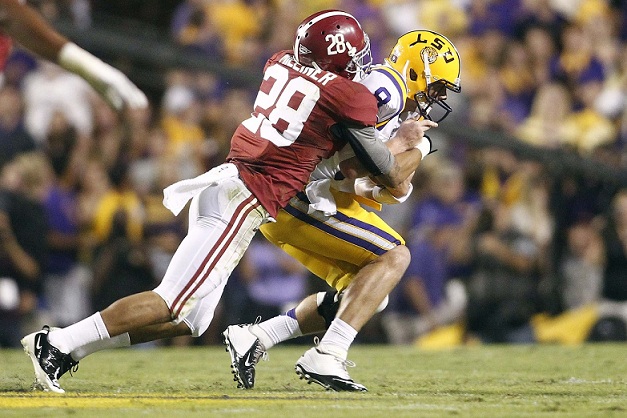

The New York Jets and general manager John Idzik have finally gotten their entire draft class under contract as they inked ninth overall pick cornerback Dee Milliner to an approximately four-year $12.6million fully guaranteed deal with a team option for a fifth.
Here is the approximate salary breakdown:
| Year | Salary | Signing Bonus | Total Yearly Cap Hit |
| 2013 | $405,000 | $1,898,780 | $2,303,780 |
| 2014 | $980,945 | $1,898,780 | $2,879,725 |
| 2015 | $1,556,890 | $1,898,780 | $3,455,670 |
| 2016 | $2,132,935 | $1,898,780 | $4,031,715 |
Since Milliner’s base salary, payments he receives during the season, are guaranteed and if the Jets released him the team would still be responsible for payment, they wanted some protection within the contract.
This protection comes in the form of an offset and here is how it works:
Take Milliner’s 2016 salary approximately $2.1 million guaranteed so if the Jets released Milliner and he signs with another team for $1 million that season the Jets would pay Milliner $1.1 million while the other team pays him $1 million.
The money owed is “offset” by the new team’s payments. Milliner still gets the same amount as originally contracted but the Jets get $1 million in salary cap relief.
If there was no offset the Jets would pay Milliner $2.1 million while his new team paid him $1 million so he’d make $3.1 million for that year, this is known as “double-dipping” getting paid by two teams and the Jets get no relief.
The Jets insisted upon and got offset language in both Milliner and their other first round pick Sheldon Richardson’s contract since he’s contract, about $10 million, is fully guaranteed. General Manager John Idzik has set a precedent that all rookies’ contracts with guaranteed salary will contain an offset.
An offset is only an issue if a player has guaranteed salary because if the salary is not guaranteed the team will not be responsible for payment if the player is released.